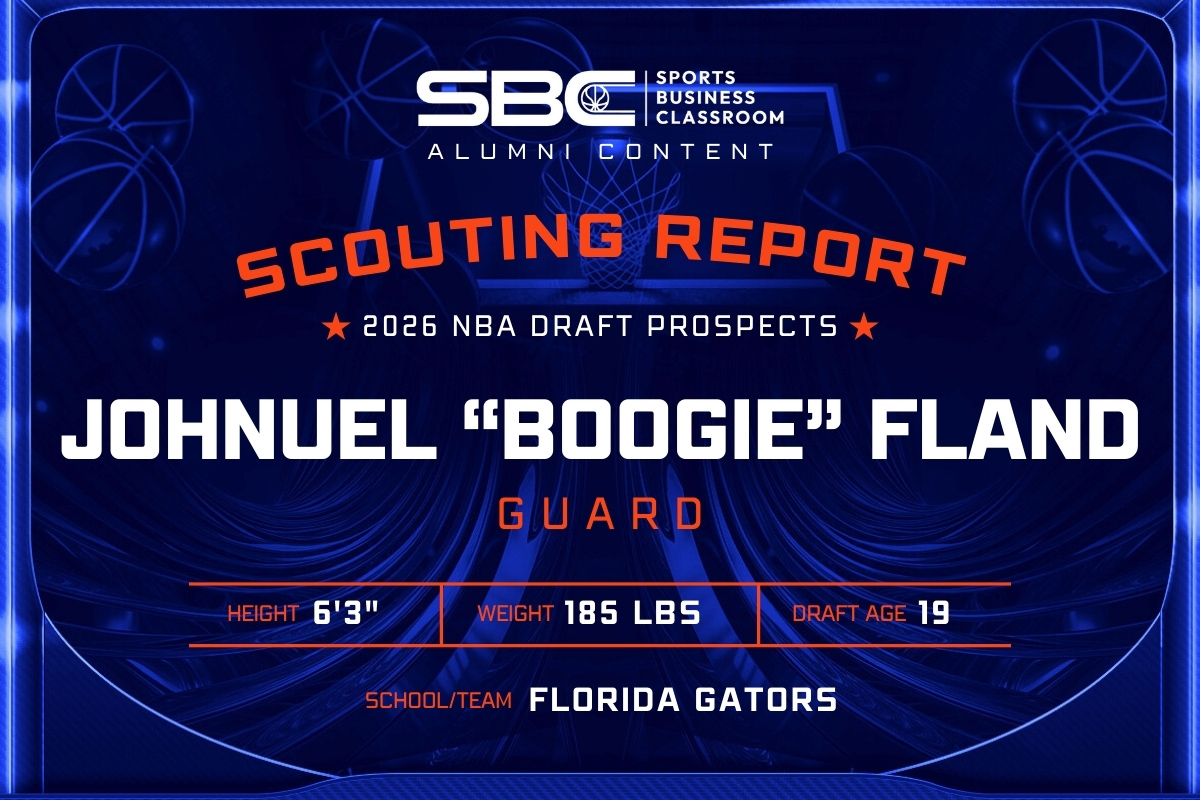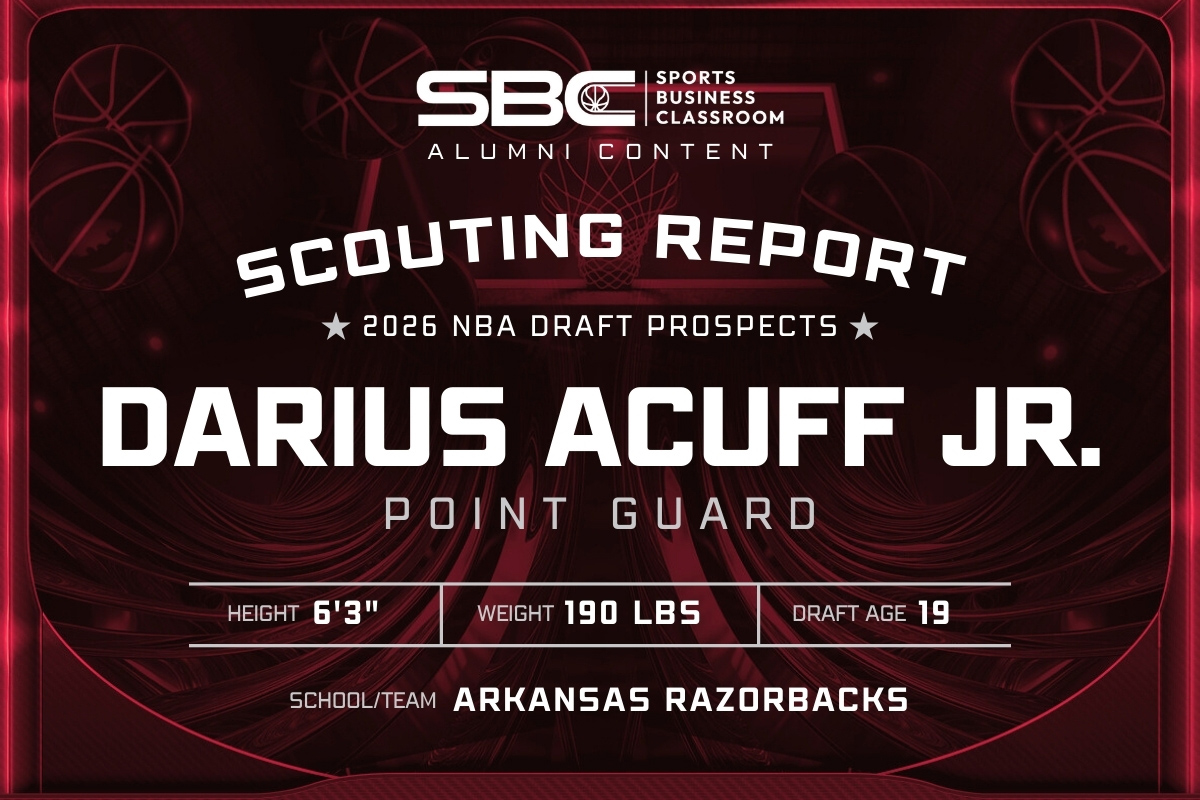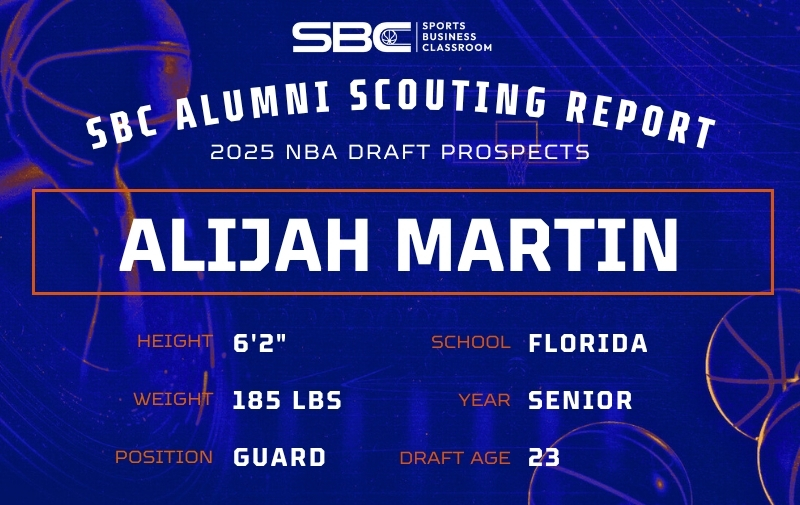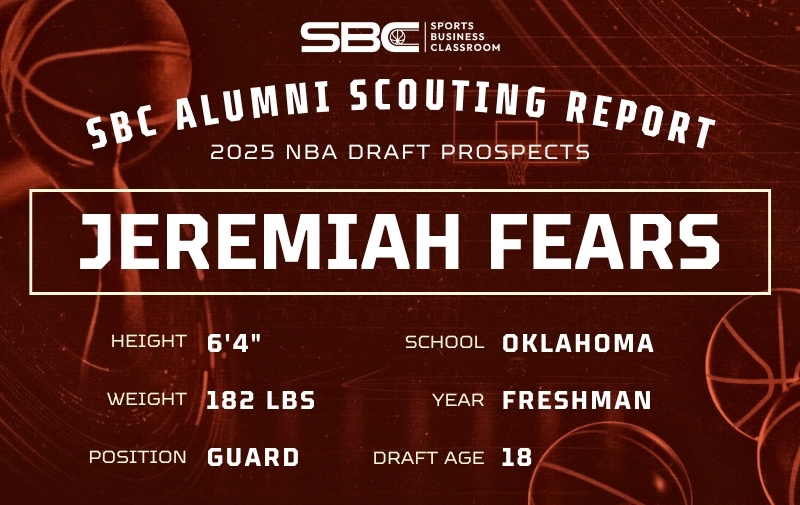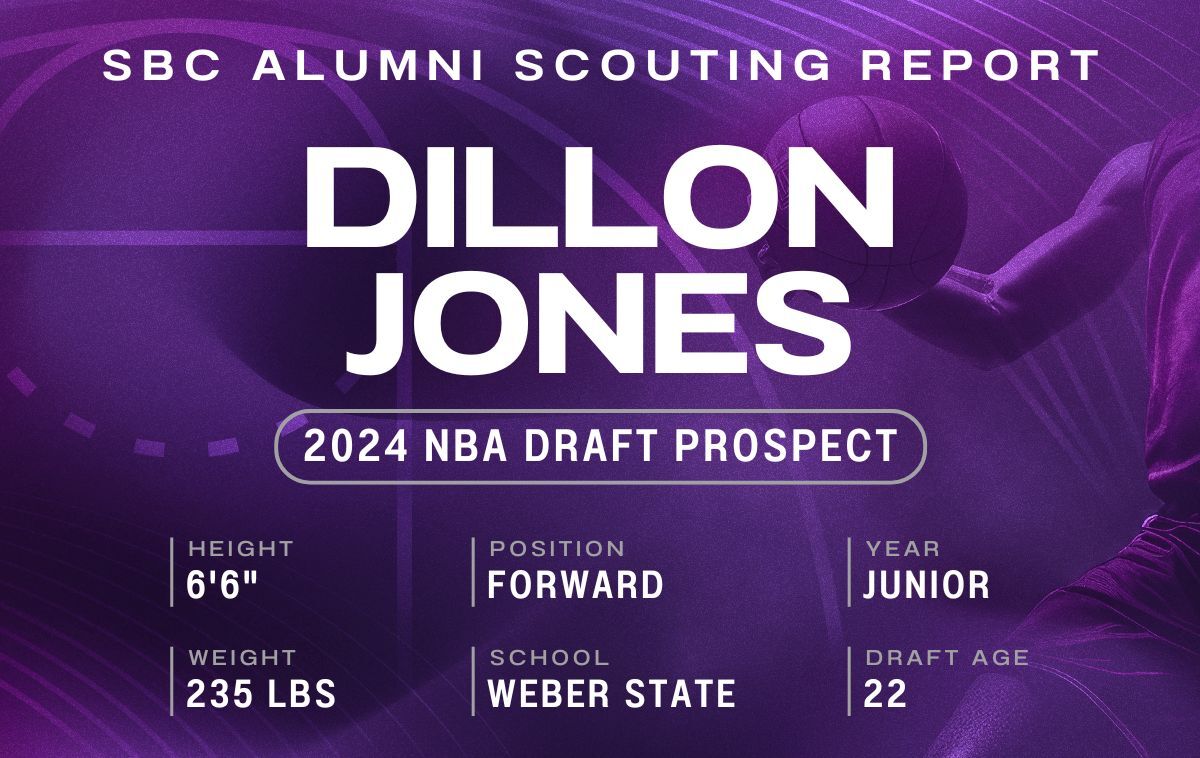
[The following scouting report is part of a series on potential 2024 draft prospects from Sports Business Classroom alumni.]
Dillon Jones
Frame: 6’6″, 235 lbs
Position: Forward
Team: Weber State Wildcats
2024 Draft Age: 22
Stats via www.sports-reference.com
Offense
Jones thrives on the offensive end as a ball handler on the wing, often operated as the primary ball handler for Weber State. He would initiate their offense and get them into sets, typically as the pick-and-roll operator. Jone has a slick handle for his size that allows him to snake screens and reach his court spots. He has good vision, often seeing passing lanes before they are open, especially his bigs rolling to the rim. However, his delivery on these passes is hit or miss, as you can see him recognizing the lane but throwing the pass too early or trying to bait the defense for too long and delivering the pass late (especially true when hitting kick outs to corners). Jones will hold onto the ball for too long, trying to get a different look. All of this is reflected in his numbers, having 5.3 assists to 3.1 assists, with a 31.3 assist percentage to 16.1 turnovers, according to www.barttorvik.com.
Jones used his size, strength, and slick handle to attack the rim, executing impressive up-and-under moves with solid body control. He’s versatile despite not being an above-the-rim finisher. However, this strategy sometimes poses challenges, especially when facing centers of significant size. Jones struggled to rise over their contests and get a clean shot off. His lack of explosive speed also meant quicker defenders could stay on his hip, limiting his offensive options. Despite these challenges, Jones maintained a respectable 61.4 percent shooting at the rim on 197 shots, with only 6.6 percent assisted.
From behind the arc, Jones has faced challenges throughout his collegiate career, shooting 32.1 percent on 305 attempts. His mechanics appear sound, but his shooting pocket is a bit awkward. He brings the basketball across his body while keeping the ball close, making it uncomfortable and difficult to get off against defenders. Despite these challenges, he has shown promising results as a spot-up shooter (though the Wildcats only used him a little in that role).
Jones took plenty of mid-range shots this year because of his high usage and expanded role. Many of the same issues with his jumper from behind the arc also appeared here, but he could use his strength and size in certain matchups to create more space for himself. But again, Jones doesn’t get off clean looks against similar-sized defenders, where the lack of burst and awkward shoot pocket stand out. On the season, Jones shot 41.1 percent on 129 shots from the mid-range while being assisted on 5.7 percent.
Because of his size and downhill playstyle, Jones can draw plenty of contact at the rim. His flashes as a spot-up shooter carry over to the free throw line, where his wind-up looks much more comfortable than attempting on-ball shots. Over four years, Jones shot 82.1 percent on 564 attempts, suggesting he can improve as a shooter in a different role in the NBA.
Defense
Jones’s biggest defensive strength is his ability to steal, averaging 1.9 steals with a 3.1 steal percentage. He tended to roam and pick off passing lanes, especially when positioned as a strong side defender. Gambling too much on defense often came back to bite him, making unnecessary jumps at a pass, giving the offense an advantage by being out of position.
On the glass, Jones can use his size to position himself for rebounds and move offensive players out of his vicinity. He has a great knack for the ball and a high motor on the glass, making him the best defensive-rebounding forward in the nation. He averaged 9.0 defensive rebounds per game with a 31.0 defensive rebound percentage, which ranked second in the country amongst all positions.
Despite this, Jones’s consistency on the defensive end is iffy as he tended to check out of possessions. It’s understandable, given his 24th-highest usage rate in the nation offensively. However, Jones caused the Wildcats to struggle defensively for entire stretches, not keeping his man in front of him down the stretch of possession or losing sight of him off the ball, which resulted in an open shot. He was particularly bad on closeouts, where his sloppy footwork and halfhearted closeouts led to the offensive player driving right past him with minimal effort. Compounded by his physical limitations, Jones may lack a natural position to guard, as smaller players can blow by him, and bigger forwards or centers can back him down and finish right over him.
Looking Ahead
Upon finishing his senior year, Jones was considered one of the nation’s most significant offensive engines. He carried a massive load for the Wildcats and displayed his playmaking and finishing in spades. However, his shooting concerns raise questions about whether he can play without the ball effectively at the next level and whether that will be the best use of his skill set. Add the defensive questions, and Jones projects as a late first to early second pick. He may be a jack-of-all-trades rotation player with his slashing, passing, and rebounding. His improvements on defense will determine his ceiling and whether he can knock down threes consistently.



